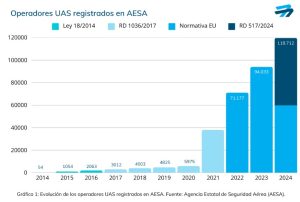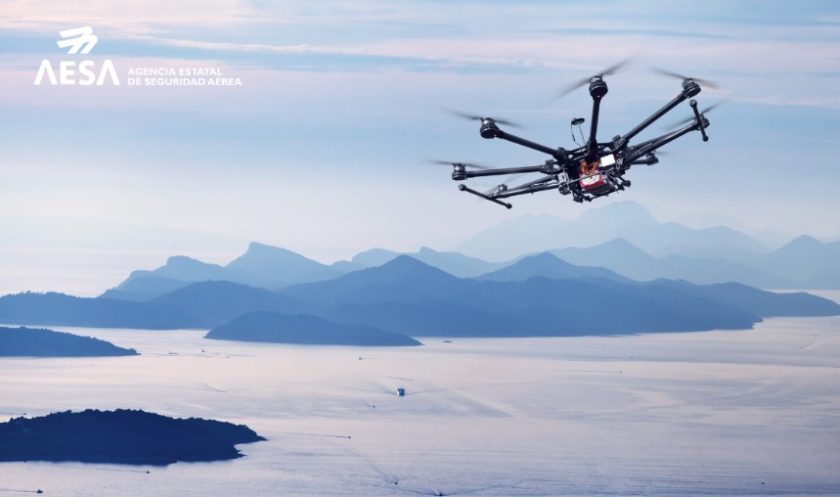The State Aviation Safety Agency (AESA) has ended 2024 with the registration of 119,712 unmanned aircraft system (UAS) operators in Spain, an increase of 27% compared to the previous year, according to an AESA press release. In 2024, 25,679 new UAS operators have been registered with the Agency, reflecting, once again, the growth and development of the national drone industry.
“The entry into force on June 25 of the new Royal Decree 517/2024 has marked a turning point in boosting the sector, as it has established a national regulatory framework for the civil use of UAS consistent with that of the European Union, providing stability and legal certainty to the drone sector in Spain,” said the press report. “The aim of this regulation is to promote the provision of services and economic activity in the sector, favouring the competitiveness of Spanish operators and manufacturers. Among the new features, the changes and regulations within EASA operations, the creation of a new UAS zoning, the development of the regulatory framework for U-Space, and the application of the legal regime to non-EASA operations stand out.”
Since the European regulations came into force in 2022, AESA has issued a total of 221,340 training certificates to carry out UAS operations. With this, at least 117,909 pilots have received the most basic training for UAS operations (open category A1/A3), 21,876 pilots received it in 2024. “One of the most important points in the new features of RD 517/2024 in this area is the training of UAS radio operators, who must have a theoretical certificate, issued by AESA, and a practical certificate, issued by an examiner authorized by AESA,” said AESA. “Since the entry into force of this regulation, AESA has issued 584 theoretical certificates for UAS radio operators.

“On the other hand, since January 1, 2024, the European standard scenarios (STS-EU) came into force, which currently coexist with the national standard scenarios (STE-ES) until the end of their application on December 31, 2025. Since its entry into force, AESA has issued 1,134 STS-EU certificates, having registered 80 recognized entities for this purpose.”
“This year, AESA has issued the first authorisation for operations with up to 1,000 swarming drones for national territory, an example of the advances in cutting-edge innovation of the Spanish UAS sector, which allows progress in the diversification of commercial drone services. Currently, UMILES Group and Flock Drone Art are the two Spanish operators that hold this authorisation.
“In addition, the Agency has issued the first Light UAS Operator Certificate (LUC) to CATUAV, a success story that allows this operator to assess the risks of its operation and authorize its activity, thus reducing paperwork by allowing its operations immediately.
“AESA also published a new rapid risk assessment specific to phytosanitary operations (PDRA-01-F) with UAS of up to 3 metres, adapted to aerial spraying and dispersion of agricultural/forestry products. Since the publication of this PDRA 01-F, the Agency has processed 160 agricultural applications , authorising 120 of them with this new procedure. This fact is a good example of AESA’s work to streamline administrative procedures in the sector, also contributing to the application of UAS technology to other sectors.
“Another milestone to highlight in 2024 has been the first authorisations issued by AESA to carry out aeromodelling operations above 120 metres in height . With this, the Royal Spanish Aeromodelling Federation and the Spanish Aeromodelling Association have been allowed to carry out operations up to 300 metres, or in some cases, up to 500 metres, in their different associated clubs.
“Lastly, last December, AESA defined two new national standard scenarios specific to non-EASA activities, to adapt the needs of this type of operations, such as police, customs, surveillance or search and rescue, to the new regulation, RD 517/2024.
For more information
https://www.seguridadaerea.gob.es/es/noticias/espana-supera-los-119000-operadores-de-drones-registrados-en-la-agencia-estatal-de




